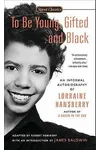Picture a trailblazing storyteller who shattered barriers with a single play—meet Lorraine Hansberry! As the first Black woman to have a play produced on Broadway, her masterpiece A Raisin in the Sun captivated audiences with its raw, heartfelt exploration of dreams, race, and family. Born in Chicago’s segregated South Side, Hansberry turned personal struggles into universal stories that still resonate today.
With a sharp pen and unyielding spirit, she wove African American experiences into narratives that challenged societal norms. Her work isn’t just theater—it’s a call to reflect on identity, justice, and the pursuit of a better life. Ready to dive into her world? Let’s explore Lorraine Hansberry’s remarkable journey.
The Making of Lorraine Hansberry
Born on May 19, 1930, in Chicago, Lorraine Hansberry grew up in a world shaped by racial segregation. Her father, a real estate broker, fought housing discrimination, inspiring her lifelong passion for justice. As a child, Hansberry faced hostility when her family moved into a white neighborhood, an experience that later fueled her writing. She studied at the University of Wisconsin but left to chase her dreams in New York City, where she honed her craft as a writer and activist.
Influenced by her family’s activism and the vibrant Harlem Renaissance, Hansberry found her voice in the theater. She worked as a journalist for Freedom, a progressive newspaper, before pouring her heart into playwriting. Her early years were a crucible, forging a storyteller determined to confront injustice with art.
Lorraine Hansberry’s Unforgettable Stories
Hansberry’s breakout work, A Raisin in the Sun (1959), is a towering achievement. The play follows the Younger family as they grapple with poverty, racism, and conflicting dreams in a cramped Chicago apartment. Inspired by Langston Hughes’ poem “Harlem,” it asks, “What happens to a dream deferred?” Its universal themes of hope and resilience made it a cultural touchstone, earning critical acclaim and a lasting place in American theater.
Her later works, like The Sign in Sidney Brustein’s Window (1964), explored bohemian life and political disillusionment, showcasing her versatility. Hansberry’s unfinished play Les Blancs, published posthumously, tackled African colonialism with searing insight. Her style blended realism with poetic dialogue, creating characters that felt alive and stories that demanded attention. Themes of racial identity, social justice, and human dignity ran through her work, making her a voice for the marginalized.
Though her career was brief, Hansberry’s ability to capture the African American experience with nuance and empathy set her apart. Her plays weren’t just stories—they were mirrors reflecting society’s flaws and potential.
Why Lorraine Hansberry Matters
Lorraine Hansberry’s impact transcends theater. A Raisin in the Sun broke racial and gender barriers, paving the way for future Black playwrights like August Wilson and Suzan-Lori Parks. Her fearless exploration of systemic inequality challenged audiences to confront uncomfortable truths, sparking conversations that remain vital today. Hansberry’s activism, from civil rights marches to feminist writings, amplified her art’s message of equality and self-determination.
Her legacy lives on in classrooms, theaters, and adaptations, including the 1961 film and 2008 Broadway revival of A Raisin in the Sun. Hansberry’s work continues to inspire artists and activists, reminding us that stories can change hearts and minds. Despite her death at 34, her voice endures, as powerful now as ever.
About Lorraine Hansberry
- Born: May 19, 1930, in Chicago, Illinois
- Key Works: A Raisin in the Sun, The Sign in Sidney Brustein’s Window, Les Blancs
- Awards: New York Drama Critics’ Circle Award (1959) for A Raisin in the Sun
- Died: January 12, 1965
Snag A Raisin in the Sun and dive into Lorraine Hansberry’s powerful, poetic world! Her stories aren’t just plays—they’re a wake-up call to dream big and fight for what’s right.



